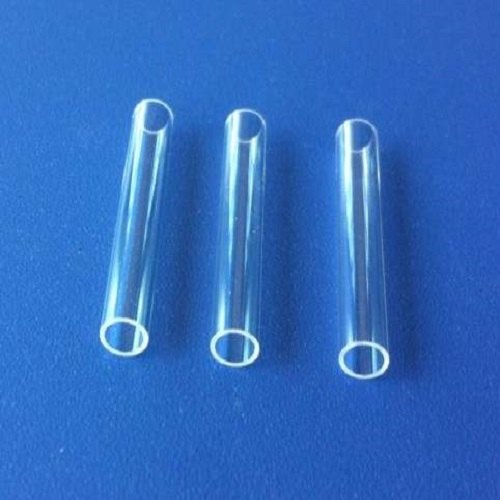
Quartz glass is made by melting natural quartz crystals. Mostly this type of glass is used in the lighting and semiconductor industry. It has low iron, potassium and sodium oxides which results in low trace element content. There is a wide range of laboratory-ware available in this material including joints, tubes, flasks, beakers, cuvettes, and crucibles.
Quartz glass is chemically inert to most chemical compounds: water, salt and acids, making it an advantageous material in chemical laboratories and industries. It is essentially impermeable to gases. Hydrofluoric acid and phosphoric acid are the only agents that can etch and disintegrate quartz glass at ambient temperatures. However, alkali and alkali earth agents attack the surface, causing accelerated devitrification. 0.1 mg of alkali per square centimeter of alkali compounds can amplify to transform all of the semi-stable molecules. Even fingerprints, which contains traces of alkali, can trigger devitrification.
Quartz glass has almost similar mechanical properties compared to other glass types. Quartz glass has high compressive strength, but also exhibits high brittleness. Surface defects can also affect the overall strength of this material. Machine-polished parts tend to be weaker than fire-polished ones. Also, the age of the glass also affects reliability due to exposure to the environment.
Picture Credit : Google



